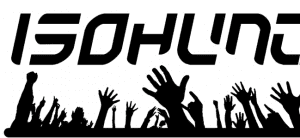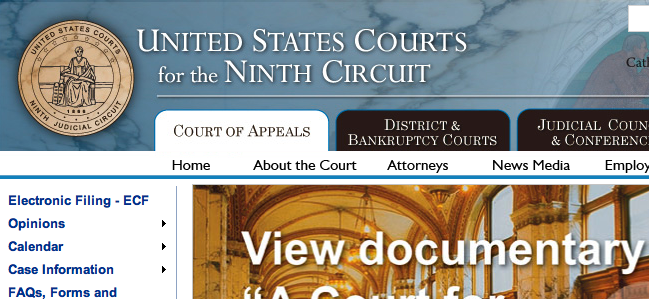IsoHunt, Veoh and the Rules of DMCA Safe Harbor
 In 1998, the U.S. passed the Digital Millennium Copyright Act (DMCA), a multi-part act that was an attempt to update copyright law for the digital era. One of the provisions in the DMCA is known as the safe harbor provisions and those provisions specifically deal with that hosts and other intermediaries face for copyright infringement via third parties.
In 1998, the U.S. passed the Digital Millennium Copyright Act (DMCA), a multi-part act that was an attempt to update copyright law for the digital era. One of the provisions in the DMCA is known as the safe harbor provisions and those provisions specifically deal with that hosts and other intermediaries face for copyright infringement via third parties.
The “big idea” of the law is simple: Sites that host content for third parties, namely users, should not be liable for copyright infringement so long as they don’t have actual knowledge of the infringement, remove content quickly upon proper notification and do not receive financial benefit when they are able to control the activity.
This law, as controversial as it can be, is designed to both protect hosts from liability and give rightsholders an easy way to remove infringing material. It’s also enabled many of the Web’s best-loved sites as Facebook, YouTube and even Google likely couldn’t exist without these protections.
However, the law also left a great deal open to interpretation and created areas of uncertainty. Slowly, some of those legal gray areas have been coming before the courts and two rulings, both from the Ninth Circuit Court of Appeals, sheds some light into them.
The first case involves the video streaming site Veoh and the second looks at the Bittorrent tracker IsoHunt. Two very different sites looking at the same issue with two very different outcomes.
Here’s a look at what went down and what it likely means for safe harbor moving forward.
The Veoh Ruling
 Veoh is a video sharing site similar to YouTube and Blip.TV. However, Veoh was sued by Universal Music Group, which alleged that the site didn’t qualify for safe harbor protections and was responsible for infringing copies of UMG-owned songs on their servers.
Veoh is a video sharing site similar to YouTube and Blip.TV. However, Veoh was sued by Universal Music Group, which alleged that the site didn’t qualify for safe harbor protections and was responsible for infringing copies of UMG-owned songs on their servers.
The lower court found in favor of Veoh, denying Universal’s request for a summary judgment saying that it qualified for safe harbor protection. However, Universal appealed, making three arguments:
- That Veoh performed functions not protected by the DMCA, such as re-encoding video for streaming.
- That Veoh had been made aware of infringements but failed to act.
- That Veoh profited from the infringements via ads and had both the right and the ability to control it.
However, the Appeals Court sided with Veoh entirely. Saying that re-encoding video did not disqualify it from protection, that there was no evidence Veoh had failed to remove infringing material after a proper notification and that, while Veoh did profit from the infringement, it lacked adequate ability to control them (siding with a similar ruling in the Second Circuit Court of Appeals.)
The decision was seen as a major blow to Universal and to others seeking to limit safe harbor protections.
The IsoHunt Ruling
 The IsoHunt case is, in many ways, similar to Veoh’s but critically different in others. It centers around Gary Fung, the founder of the popular BitTorrent tracker (as well as other sites) who was sued by a group of movie studios for copyright infringement.
The IsoHunt case is, in many ways, similar to Veoh’s but critically different in others. It centers around Gary Fung, the founder of the popular BitTorrent tracker (as well as other sites) who was sued by a group of movie studios for copyright infringement.
Fung argued that his site was purely user-generated and that it should qualify for safe harbor protection. However, the lower court disagreed and issued an injunction against IsoHunt, ordering them to filter out keywords as provided by the movie studios.
IsoHunt appealed the ruling and lost again at the Court of Appeals.
However, Fung’s case centered largely around the idea of “inducement”. In the Supreme Court decision on the Grokster case, the court found that if one induced others to commit copyright infringement, they could be held liable for contributory infringement. This is what the lower court found and what the Appeals Court agreed with.
According to the court, Fung actively induced others to commit copyright infringement not only by setting up tools that encouraged users to upload torrents for best-selling movies, through message board posts, and by providing “A service that could be used to infringement copyrights, with the manifested intent that the service actually be used in that manner.”
Further, the court found that Fung had “red flag” knowledge of infringing activity, meaning instances where he knew of infringing activity without a proper DMCA takedown notice and still did not remove the work.
Fung’s only minor victory was reducing the breadth of the injunction so that he could work on other projects that might be used for the purpose of copyright infringement.
Key Differences
In many ways, the two cases were very similar. The two services offer third parties the ability to submit content, which is often copyright infringing. Both took down infringements when notified but both were sued regardless. However, Veoh won and IsoHunt didn’t.
Why?
The biggest factor seems to be in the actions of the people who ran the respective sites. Veoh did nothing to induce infringement other than offer a site for users to upload videos. IsoHunt, on the other hand, actively encouraged uploads of top movies, aided users with copyright infringement in its forums and took direct steps to ensure that his site would be used for the purpose of infringement.
Veoh’s site is much more neutral in both its design and its use. Because of this, while Veoh does have some infringing content, the actual amount is much lower (percentage wise) than IsoHunt. In fact, IsoHunt’s large percentage of infringing material was cited by the court in its decision.
In short, the court has tried to make it clear between these two decisions that it wants to make sure legitimate sites have a broad amount of protection under the DMCA but that those who act with bad faith have none.
Important Questions for Safe Harbor
While these two cases shed some interesting light on safe harbor issues, there are still a lot of questions that are vague and largely unanswered.
Those include:
- Red Flags: Red flag takedowns are takedowns that, though not served via a full DMCA notice filed by the copyright holder, give the host the level of knowledge where they are legally bound to act. The court found red flag knowledge existed for IsoHunt but not for Veoh.
- Content Manipulation: The court in Veoh found that re-encoding a video does not remove safe harbor protection but the court looked unfavorably upon IsoHunt’s editing of torrent files to add new trackers.
- Willful Ignorance: In both cases the court ruled that defendants can’t simply “bury their head in the sand” and expect safe harbor protection. However, the standards for willful ignorance in these cases is unclear.
There are some clues on the red flag issue in both cases. The Veoh decision discusses one notice that could have qualified as a red flag because it identified the specific infringing material. However, that was tossed out of consideration because it was the copyright holder that filed the notice and, instead, needed to file a full DMCA takedown.
Though many are quick to say that the IsoHunt case is a revival of “red flag” notices, which had been pushed to the point of irrelevance due to court decisions limiting their use, the Veoh case makes it clear that any revival will be very limited at best. In fact, without the inducement, it’s possible even IsoHunt wouldn’t have had red flag knowledge.
That aside, the amount a host can manipulate content and not earn a scolding rom the courts remains unclear. Though adding a few trackers to a torrent file is not acceptable, altering a movie file to make it available for streaming is. The lines there are gray, as they are with the willful ignorance issue.
Those are questions that may have to be answered in other court decisions.
Bottom Line
In the end, the court, in these cases, seems to be primarily looking at the motivations and the actions of the people running the sites in questions. Those who operate in good faith seem to have little to fear if there’s some infringement on their service. But those who attempt to act in bad faith and hide behind safe harbor like a shield, they may be surprised to learn how thin that protection is.
So while you probably should be comfortable setting up your next video site or social network, I’d be wary of setting up another BitTorrent tracker, cyberlocker or other site aimed at aiding piracy.
The DMCA protections can be very thin if you act in bad faith. With services like IsoHunt and Veoh, there’s something of a collision of the DMCA and the Grokster ruling. Safe harbor can protect you, but only if you’re not inducing infringement and you follow the law closely.
In short, safe harbor protection is real and can be very useful, but it’s not a magic shield that lets a site do whatever they want. I can be stripped away very easily if one goes too far outside of the boundaries of good faith.
Want to Reuse or Republish this Content?
If you want to feature this article in your site, classroom or elsewhere, just let us know! We usually grant permission within 24 hours.
